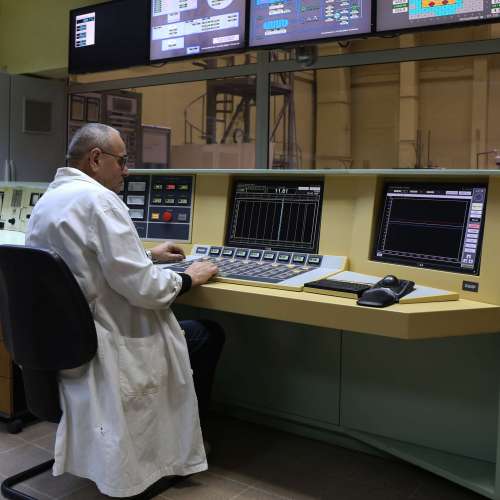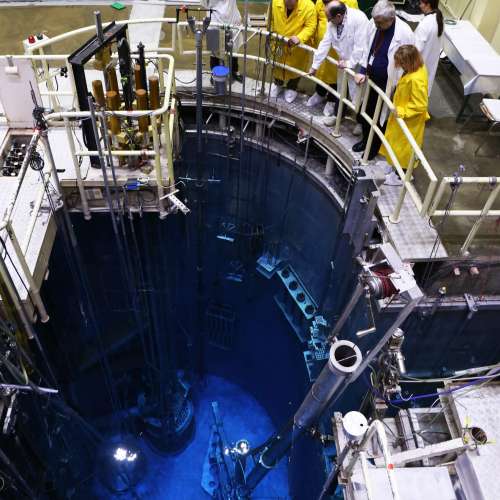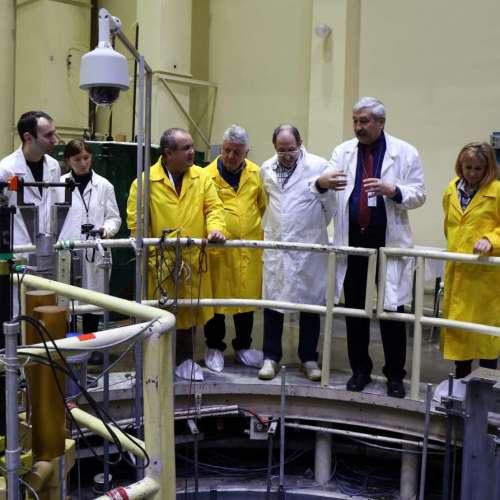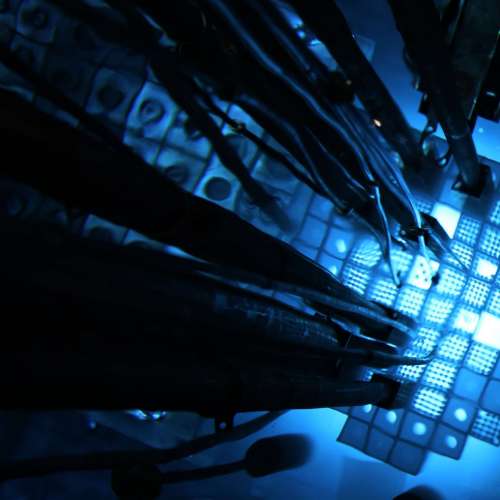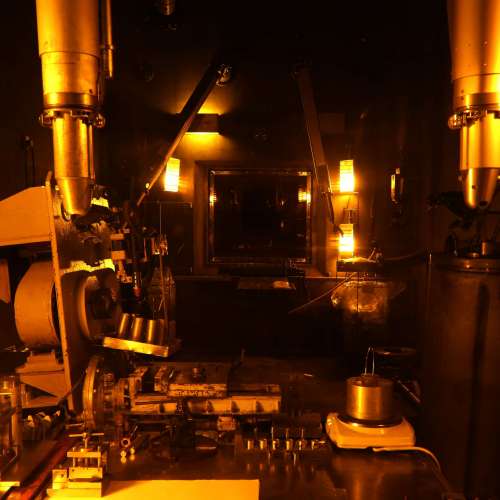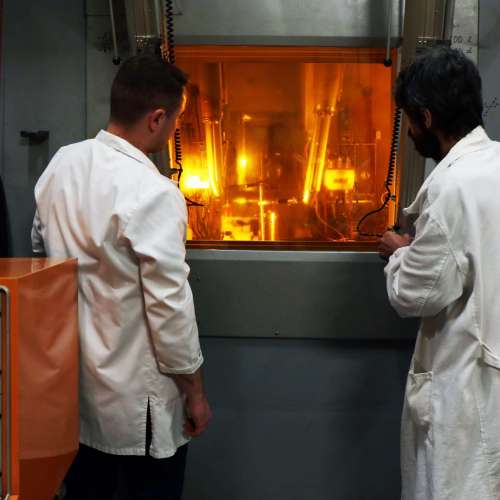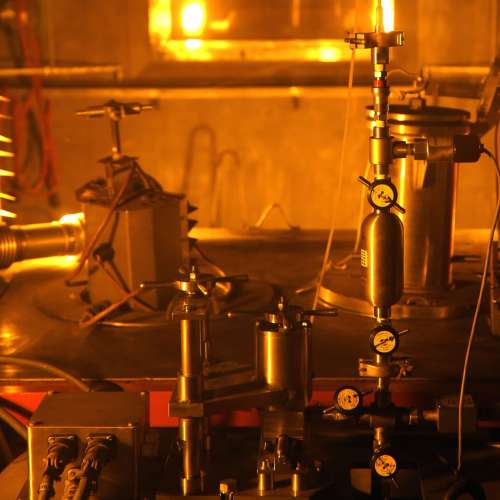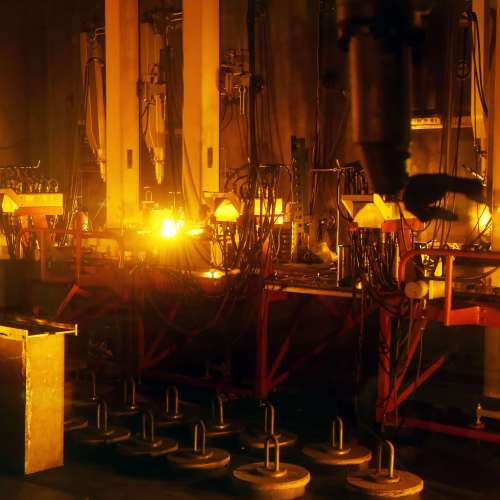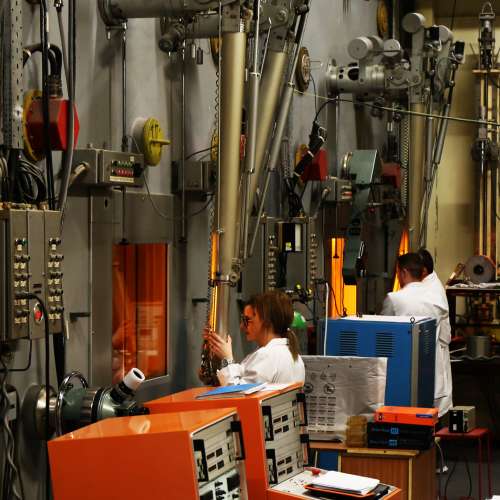TRIGA Reactor and Post Irradiation Examination Laboratory (PIEL)
TRIGA SSR and ACPR Reactor
The Reactor department has unique facilities at national level, which allow the testing during irradiation of nuclear fuel and structural materials for nuclear power plants.
- TRIGA SSR reactor - 14 MW - stationary research reactor LWR type, maximum power 14MW, max thermal neutron flux max 2.6 x1014n / cm2s, rectangular irradiation channels max 500 x 85 x 85 mm, peripheral channels Ø 32 mm and thermal neutron flux max 8 x 1013 n / cm2; Mainly used for medium and long-term irradiation of nuclear fuel and structural materials, production of radioisotopes, etc.
- TRIGA ACPR Reactor - Pulsed ring reactor. Maximum pulse 20000 MW, width at half height of approx. 4 ms, dry central channel Ø 228 x 381 mm; Used to obtain experimental data on the mechanisms and threshold of cladding failure in pulse conditions, to determine safety limits, to investigate the thermo-mechanical behavior of nuclear fuel in conditions of rapid transition.
The two reactors are located in a common pool, with a direct connection through a transfer channel with the hot cells of LEPI (Post-Irradiation Examination Laboratory).
In this nuclear facilitity there are also:
- The “pneumatic rabbit” type of device for neutron activation analyzes at each of the two reactors and in the thermal column;
- Beam tubes for each of the two reactors.
Following the extensive modernization process completed in 2011, the lifetime of the TRIGA ICN nuclear installation has been extended until 2030.
- The thermal column - Standard neutron spectrum system in the intermediate energy range Sigma-Sigma with irradiation cavity, placed in the pool adjacent to the TRIGA SSR reactor. Thermal neutron flux density is between 2 × 106 - 5 × 1010n / cm2s-1
- Irradiation devices simulating CANDU conditions (300oC, 12 MPa)
- Loop A - 100 kW, with forced circulation, for “power ramp” type irradiations
- Capsule C2, natural convection, for instrumented irradiation tests
- Capsule C9, for (accelerated) load monitoring irradiation
- Other irradiation devices
- Capsula C5, pentru iradiere de materiale structurale în Heliu, (290oC, 0.6 MPa)
- Capsula C6, pentru iradiere în regim tranzitoriu, Presiune maximă de proiect: 10 MPa
- Capsula C11, pentru iradiere materiale structurale avansate în gaz la temperatură înaltă (600oC)
- Capsula LBE, pentru testarea / calificarea combustibililor avansați pentru reactorii GIV în reactorul ACPR, în condiții de tranziență rapidă în mediu de eutectic plumb – bismut.
- Laborator suport pentru asamblare/instrumentare nucleară dispozitive de iradiere și elemente combustible experimentale, cu dotări precum:
- Instalație de sudură computerizată TIG și microplasmă;
- Instalație de brazare inductivă în vid
- Complex data acquisition and processing system
- Water chemistry laboratory;
- High resolution gamma spectrometry laboratory;
- Prompt gamma spectrometry (PGA) installation
- Curved crystal neutron diffractometer; SANS diffractometer;
- Dry neutronography installation, Underwater neutronography installation
- Underwater equipment for visual and ultrasonic inspection
Post Irradiation Examination Laboratory (PIEL)
The laboratory has unique facilities at national level, which allow the testing, handling and examination of nuclear fuel and structural materials in nuclear power plants.
The laboratory infrastructure consists of:
- Two hot alpha-gamma cells with heavy concrete walls (examination cell and transfer cell).
The transfer cell is equipped with the following equipment:
- Devices and tools for disassembling sample holders and recovering experimental fuel elements and structural material samples tested for irradiation in the TRIGA reactor;
- Two TIG welding machines for the production of sealed sources of nuclear radiation;
- Device for measuring the gamma activity of sealed sources of nuclear radiation;
- Numerical control milling machine for preparing radioactive samples for mechanical testing.
The examination cell is equipped with the following equipment:
- Periscope with axial aiming that increases up to 12 times;
- Three non-destructive post-irradiation examination machines: machine for visual inspection by periscope, machine for dimensional measurements and vortex current defectoscopy, machine for spectrometry and gamma tomography.
- Device for measuring the thickness of the oxide layer by the method of eddy currents;
- Fission gas sampling and analysis plant.
- Two alpha-gamma hot cells with steel walls:
- metallography cell equipped with equipment for the metallographic preparation of irradiated samples for examination by optical microscopy and scanning electron microscopy;
- radiochemistry cell provided with equipment for obtaining Mo-99.
- A beta-gamma hot cell with steel walls (metallographic microscope cell);
- A beta-gamma hot cell with lead walls (mechanical test cell) equipped with an INSTRON 5569 50 kN traction machine equipped with an oven for tests up to 1000o
- Radiochemistry laboratory equipped with high-performance analysis equipment such as:
- Inductively coupled plasma mass spectrometer (ICP-MS) equipped with ELAN-DRC reaction cell for chemical and isotopic analysis;
- High resolution gamma spectrum chain with extended range at low energies (up to 5 keV);
- ORTEC 576A dual alpha spectrometric system;
- High Performance Liquid Chromatography (HPLC) System;
- Microwave digester.
- Used nuclear fuel transport system using a type B (U) transport container.
- Equipment for the production of sealed sources of nuclear radiation installed in hot cells.
- Portable gamma spectrometric chain for radioactive waste characterization.
- LEICA TELATOM 4 shielded metallographic microscope for the analysis of radioactive materials.
- Scanning electron microscope with field emission TESCAN MIRA II LMU CS Schottky Field Emission type.
- Differential Scanning Calorimeter (DSC) TA Instruments Q2000 model used to determine the hydrogen content of irradiated zirconium alloys (pressure tube, fuel element sheath).
The Post-Irradiation Examination Laboratory is part of the HOTLAB Laboratory Network.

